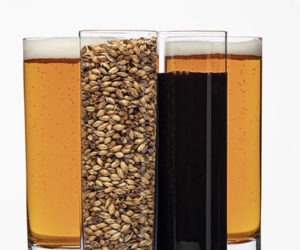Filtering for Beginners
Many homebrewers bypass the step of filtering their homebrew and instead use fining agents and cold crashing (storing the beer after fermentation has completed in a cold place for a week or longer to allow the yeast to drop out of suspension and the beer to clear naturally). Cold crashing works well for most beer styles with cooperative yeast and patience; however, if you are brewing an ultra-clear beer such as a Kölsch, or you want a smoother flavored beer, filtration should be considered.
The biggest reason to filter your beer is to remove yeast cells and haze particles (colloids). These particles are complexes of protein and tannin and can add astringency to your brew. When proteins and tannins are not complexed, in other words are soluble, filtration does not remove them. For this reason, filtering should be done cold when the beer is likely to have the most chill haze. Of course, clearer beer (with the exception of styles like hefe-weizen that are supposed to be unfiltered and hazy) also looks more appealing, and looks have a psychological affect on taste. Many negative side effects can be avoided without filtration if you have the time, but filtering can get done in minutes what can otherwise take weeks.
There are potential negative impacts of filtering, and it is important to be aware of these so you can make your own adjustments as needed. Filtering removes more than just the bad things from your beer. It will also remove some amount of color, body, flavor, and head retention from the finished beer. BYO Writer Terry Foster recommends increasing the amount of aroma hops (bittering hop additions should not be impacted), bumping up the amount of malts that have the greatest impact on mouthfeel such as crystal or caramel, or adding a bit more colored malt in darker beers. The other caution to keep in mind is filtration will strip the yeast that is required to bottle condition your beer, so if you still want to bottle, you will have to add more yeast back into it.
There are a couple filtration options homebrewers have; plate and frame style filters, inline canister filters, and cartridge filters similar to ordinary water filters. The sheet filters, which are used in most commercial breweries, are designed specifically to filter yeast and other colloidal matter and work well for homebrewers.
The size of the filters will determine how much (good and bad) is stripped from the beer. Generally a 1 micron filter is a good compromise between 5 micron and 0.5 micron filters that are also readily available
to homebrewers.
Filtering is easy when done with two kegs. First, transfer your beer after fermentation is complete (be sure it really is complete!) to a keg. Using low CO2 pressure, the process is as easy as transferring the beer from one keg to the other, having it pass through the filter in-between. Make sure everything the beer comes in contact with is sanitized (running a sanitizer solution from keg to keg through the filter prior to doing so with beer works well) and keep air contact to a minimum.
At this point your beer is ready to carbonate using your regular kegging procedure. If you used filtration sheets then it’s time to throw them away. If you used a canister or cartridge filter, disassemble them and run them through your cleaning and sanitization routine.


